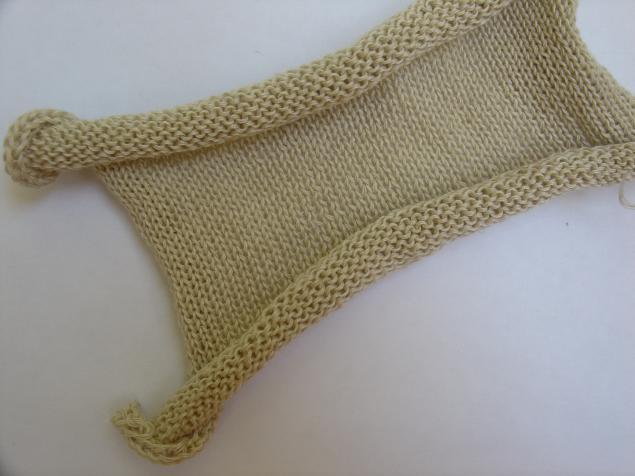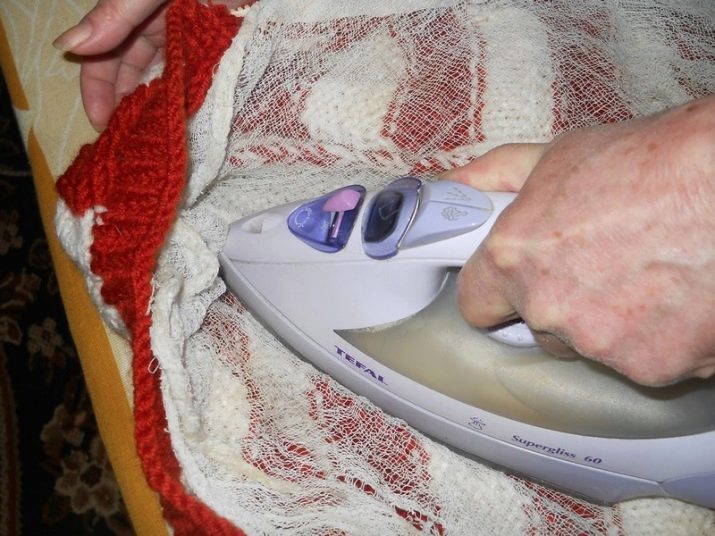Many craftswomen are faced with twisting a knitted scarf on the sides. This can significantly ruin your mood; even the desire to continue knitting sometimes disappears. Don't put your knitting needles aside! We'll tell you how to fix the situation.

Reasons for twisting knitted fabric
To obtain a quality product, certain knowledge and skills are required. If your knitting begins to curl, it means one of the mistakes was made.

- The knitting method was chosen incorrectly, there was an error in the number of loops.
- Incorrect edge processing technique.
- There was an error in the selection of threads that affected the density of the work.
These nuances may seem insignificant, but because of them, instead of the scarf you knitted as a gift, you will receive a woolen tube. You can’t give such a “gift”! We'll have to work on it some more.
How to make a scarf straight
If the finished item is not satisfactory due to curled edges, there is no need to unravel it and re-bind it. There are proven methods to help fix this problem.
Using iron and steam

- Before starting the procedure you need moisten knitted product. This can be done with a spray bottle or with a wet towel.
- For steaming you will need two or three layers of soft, clean cloth as protection.
Advice! Gauze is ideal for steaming and straightening knitted fabric.
- The work should be done on a flat surface, for example, on an ironing board or on a table covered with a towel.
- Use the iron carefully and without fanaticism, so as not to damage the product. Otherwise, the threads will become flat and the fabric will lose volume.
- You should iron the edges especially carefully..
Advice! If the yarn does not withstand heat treatment, then you can wet the product and dry it by stretching it and pinning it around the entire perimeter.
This technique is considered common and helps in 90% of cases if the product is knitted using a handkerchief method.
Using a hook or knitting needles
If the first method did not give the expected result or you do not want to steam, you can use the second method, complementing the knitting.
Crochet

Product crocheted on all four sides.
The work is done with a single crochet in the last row, moving away from you. Next, inserting the hook through the fabric, you need to grab the working thread and pull it onto the face. Several rows are knitted in this way.
The edge will be tight and neat. The calculation must be made based on the knitting density.
Important! When crocheting a product, make sure that the edges do not bunch up or ripple.
Knitting needles

- You can also make a binding with knitting needles to make it strap or elastic band.
- Or use garter stitch (all rows are front rows). First, loops are cast on the long sides, and a 2 cm strip is knitted, and then along the short sides.
- Can knit another similar piece and sew them together. True, in this case it will take more time, but the scarf will also be much warmer.
How to knit a scarf so it doesn't curl anymore

- Experienced needlewomen advise use the “English rib” or “spike rib” method for knitting a scarf. The product will be warm and fluffy. The pattern should be reversible and look perfect on both sides.
- And here regular stockinette stitch is not suitable, so the wrong side will be visible.
- If for some reason you are not satisfied with the elastic band, then you can develop your own simple combination of knit and purl stitches in a checkerboard pattern. This will protect the canvas from deformation.
- When mating stockinette stitch It is recommended to knit the first and final 3–5 stitches in garter stitch.
- Works great "double chain" technique. When planning loops, not two, but four units are taken into account. In the front row, the first loop is removed as a knit stitch, the second and penultimate ones are knitted crossed, the last one is simply removed. In the purl column, the first and last loops are knitted inside out, and the second and penultimate ones are removed.
Important! Make sure that the starting and ending loops are not too tight.
We hope that the suggested tips will help you get rid of the problem of a curled edge and help you further improve your skills. And you will get a beautiful and warm scarf.


 1
1





